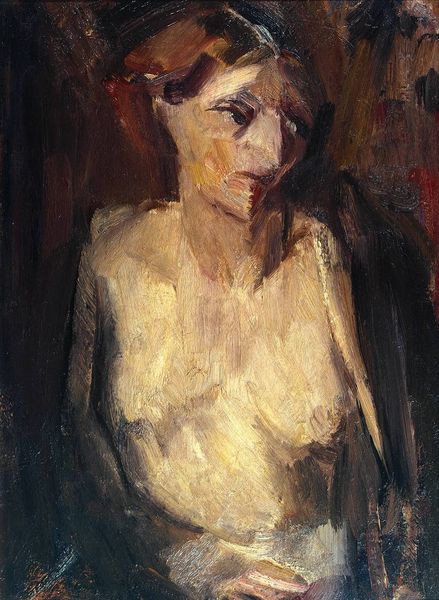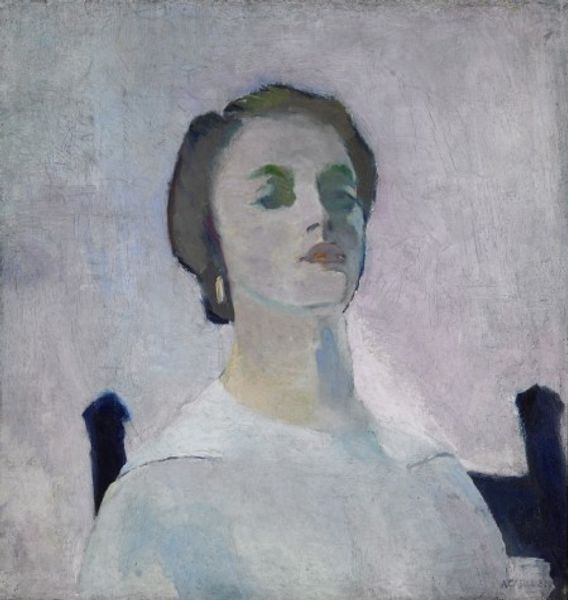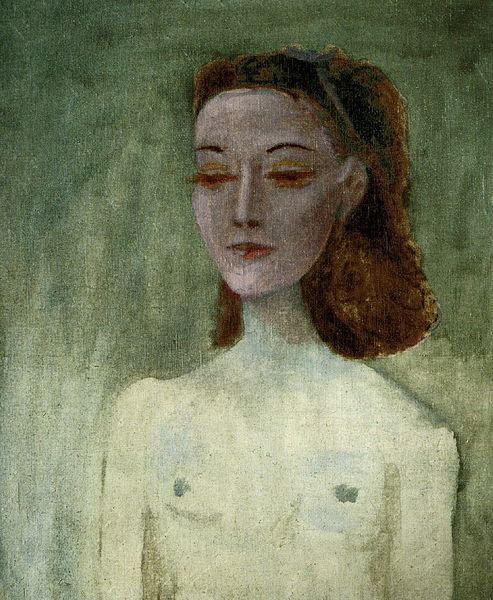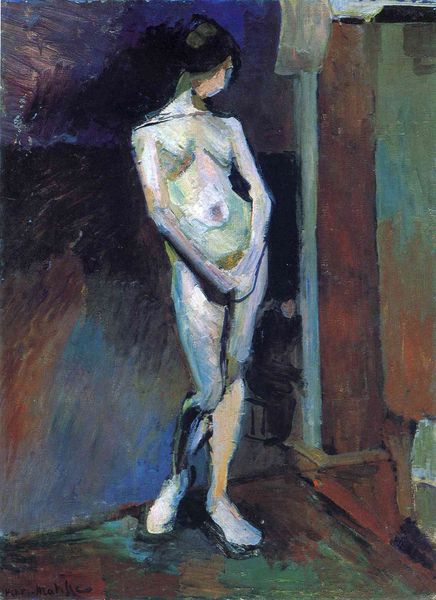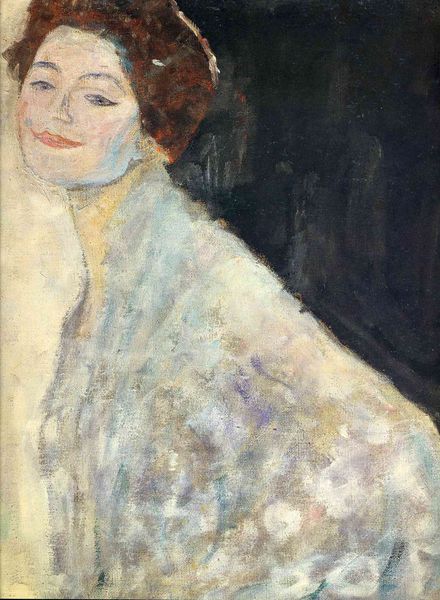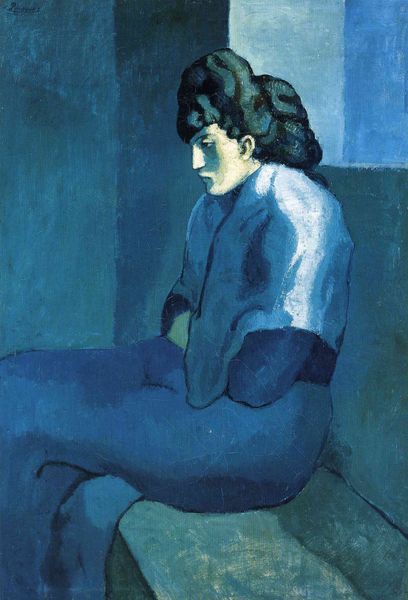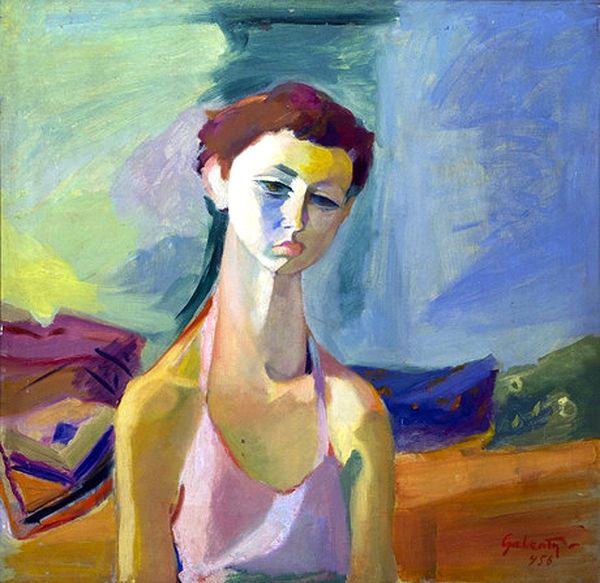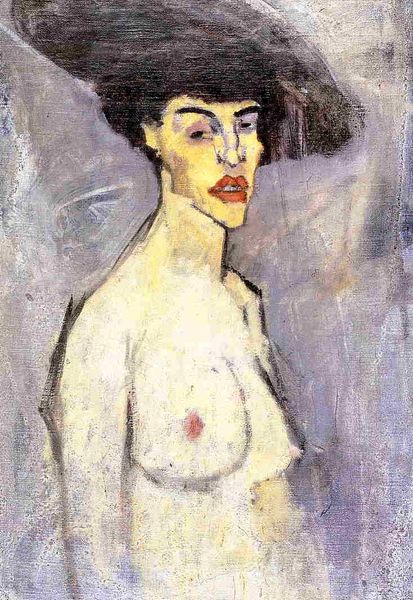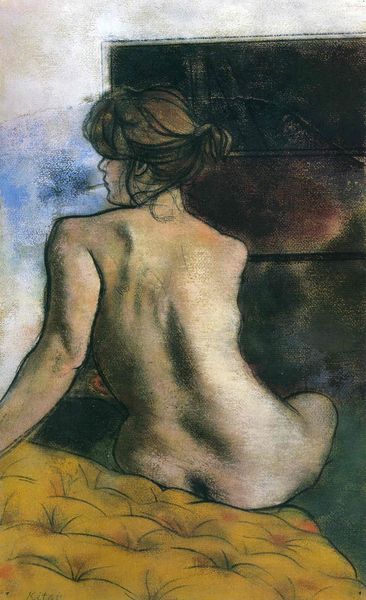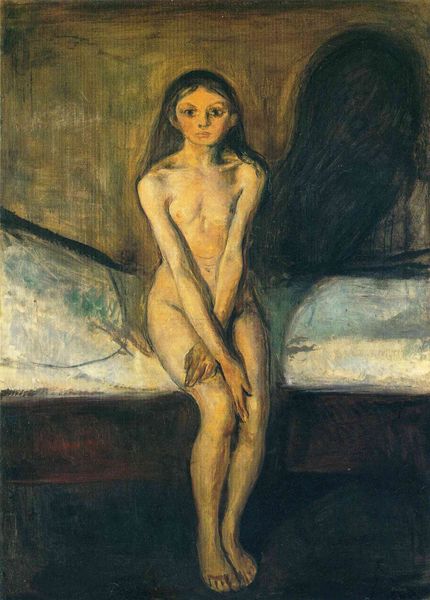
Dimensions: 100 x 70 cm
Copyright: Public domain US
Curator: Here we have Picasso's "Portrait of seniora Soler (Girl in a chemise)," created in 1903. The somber blue tones certainly place it within his Blue Period, wouldn’t you agree? Editor: It’s practically monochromatic, save for the slight warmth on the right. Instantly, I feel a sense of melancholic fragility, a quiet contemplation radiating from this figure. The color washes give a sort of intimacy to the subject, making you feel close to her despite her averted gaze. Curator: The painting exemplifies the common themes that ran throughout Picasso's Blue Period. One can detect not only isolation in his muted palette but, additionally, the common trope of impoverished female figures that captivated many artists during that era. But it does not just portray her isolation, it evokes it in the audience, right? Editor: Precisely. It’s not just observation, it's a transmitted mood. I'm thinking about the quickness of execution here, look how softly and subtly the body emerges, almost like a ghost, through the layers of translucent color. There is very little skin tone represented here, save around the ears. And it really is striking how unfinished she seems to be. I get a sense that she's about to vanish back into the brushstrokes. Curator: Absolutely, and that perceived "unfinished" aesthetic was revolutionary in its moment. Traditional portraiture, for centuries, centered on sharp details, displaying wealth, status, and defined identity. What we observe here is a deliberate shift toward expressing internal emotional realities over superficial likeness, something that becomes a powerful attribute in modernist painting that followed Picasso's innovative and unconventional styles. Editor: Which explains why I find her more present. It's almost as if I can see past the social and political restrictions into the true reality. As an artist, that is powerful. He's given us more truth than, say, a Sargent portrait of a wealthy socialite ever could. She stands here, vulnerable but visible. Curator: I think both vulnerability and visibility resonate so strongly. Picasso's use of painting style became, therefore, inextricably linked to broader conversations concerning social reform and modern identity—not only from a historic perspective but from the subject's perspective, as well. Editor: So beautifully observed. It seems like he gives a way into her soul through all those hues of blue. Curator: Agreed; it's hard to simply walk past it now with those thoughts, isn't it? Editor: Definitely not, this piece feels intensely haunting now in a really beautiful way.
